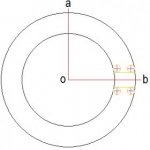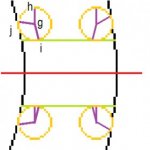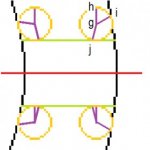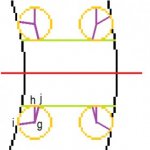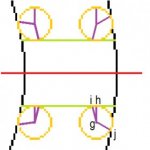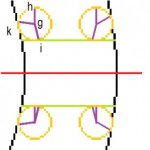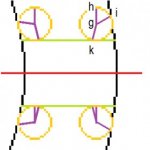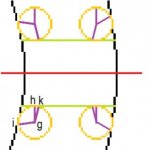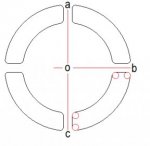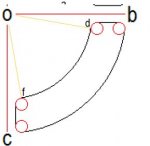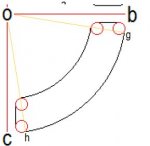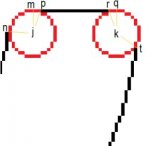Sorry for posting again. The problem I have has changed a lot, and I'm not sure I described it well the first time. So, I'm back with some pictures and to make sure I've got it all worked out.
Okay, I have a series of concentric rings, each ring defined by pairs of circles about some mid-point o, both of known (but variable) radii. The below pictures show a single ring.






In the above, I know the angle aob (though it can vary) from the first picture, I then need points c, d, e, and f from the next picture (notice they are parallel to the ob line, they are not radii of those circles, and the distance between c and the line b is known but variable, call it w). Then for each of the next four pictures I need the point g given I know gh (the radius, this can vary, too), and some way to work out the angle hgi and igk (the start and stop points where the circle with center g touches the cd or ef line and continues to touch the nearby larger circle for the ring). All of this should allow me to come up the ring separated along the line b by width w with the corners rounded off.
Okay, I have a series of concentric rings, each ring defined by pairs of circles about some mid-point o, both of known (but variable) radii. The below pictures show a single ring.
In the above, I know the angle aob (though it can vary) from the first picture, I then need points c, d, e, and f from the next picture (notice they are parallel to the ob line, they are not radii of those circles, and the distance between c and the line b is known but variable, call it w). Then for each of the next four pictures I need the point g given I know gh (the radius, this can vary, too), and some way to work out the angle hgi and igk (the start and stop points where the circle with center g touches the cd or ef line and continues to touch the nearby larger circle for the ring). All of this should allow me to come up the ring separated along the line b by width w with the corners rounded off.

